
Kuala Lumpur: The Heartbeat of Malaysia
Explore Kuala Lumpur, Malaysia's vibrant capital city, where towering skyscrapers meet historical temples, and diverse cultures blend seamlessly into a unique urban experience.
Kuala Lumpur, fondly known as KL, is Malaysia's bustling capital city. A melting pot of cultures, it offers a unique blend of modernity and tradition. From towering skyscrapers to historical temples, KL is a city that never ceases to amaze its visitors. One of the city's most iconic landmarks is the Petronas Twin Towers, the tallest twin towers in the world. Standing at 452 meters, they offer stunning views of the city. The towers are surrounded by a beautifully landscaped park, perfect for a leisurely stroll. KL's cultural diversity is evident in its vibrant neighborhoods. Visit Chinatown for its bustling markets and delicious street food. Little India in Brickfields offers a colorful array of shops and eateries. Don't miss the Batu Caves, a Hindu temple set in limestone hills, just a short drive from the city center. Shopping enthusiasts will find no shortage of options, from luxury malls like Suria KLCC to street markets such as Petaling Street. Foodies will be delighted by the city's culinary scene, which ranges from high-end restaurants to roadside stalls offering local delicacies like Nasi Lemak and Char Kway Teow. For a touch of nature, the KL Bird Park and the nearby Lake Gardens provide a serene escape from the hustle and bustle. The Islamic Arts Museum Malaysia and the National Museum offer insights into the country's rich history and heritage. Kuala Lumpur is also a gateway to other parts of Malaysia. Its efficient public transport system makes it easy to explore nearby attractions like the historical city of Malacca and the hill station of Genting Highlands.
Local tips in Kuala Lumpur
- Use the KL Hop-On Hop-Off bus for a convenient and informative city tour.
- Visit the Petronas Twin Towers early in the morning to avoid long queues.
- Carry an umbrella, as KL's weather can be unpredictable with sudden rain showers.
- Try local street food at Jalan Alor for an authentic culinary experience.
- Use Grab or other ride-hailing apps for convenient and affordable transportation.
Neighbourhoods in Kuala Lumpur
Kuala Lumpur: The Heartbeat of Malaysia
Kuala Lumpur, fondly known as KL, is Malaysia's bustling capital city. A melting pot of cultures, it offers a unique blend of modernity and tradition. From towering skyscrapers to historical temples, KL is a city that never ceases to amaze its visitors. One of the city's most iconic landmarks is the Petronas Twin Towers, the tallest twin towers in the world. Standing at 452 meters, they offer stunning views of the city. The towers are surrounded by a beautifully landscaped park, perfect for a leisurely stroll. KL's cultural diversity is evident in its vibrant neighborhoods. Visit Chinatown for its bustling markets and delicious street food. Little India in Brickfields offers a colorful array of shops and eateries. Don't miss the Batu Caves, a Hindu temple set in limestone hills, just a short drive from the city center. Shopping enthusiasts will find no shortage of options, from luxury malls like Suria KLCC to street markets such as Petaling Street. Foodies will be delighted by the city's culinary scene, which ranges from high-end restaurants to roadside stalls offering local delicacies like Nasi Lemak and Char Kway Teow. For a touch of nature, the KL Bird Park and the nearby Lake Gardens provide a serene escape from the hustle and bustle. The Islamic Arts Museum Malaysia and the National Museum offer insights into the country's rich history and heritage. Kuala Lumpur is also a gateway to other parts of Malaysia. Its efficient public transport system makes it easy to explore nearby attractions like the historical city of Malacca and the hill station of Genting Highlands.
When is the best time to go to Kuala Lumpur?
Iconic landmarks you can’t miss
Petronas Twin Towers
Experience the breathtaking views and architectural brilliance at the Petronas Twin Towers, Kuala Lumpur's iconic landmark.

Batu Caves
Discover Batu Caves, a stunning limestone temple complex with rich cultural heritage and breathtaking natural beauty, just outside Kuala Lumpur.

KLCC Park
Discover the serene beauty of KLCC Park, an urban oasis in Kuala Lumpur featuring lush landscapes, scenic paths, and iconic views of the Petronas Twin Towers.

Merdeka Square
Explore Merdeka Square, a historical landmark in Kuala Lumpur rich with colonial architecture, lush gardens, and a symbol of Malaysia's independence.

Central Market
Discover the cultural heart of Kuala Lumpur at Central Market, a vibrant destination for shopping, art, and local cuisine.
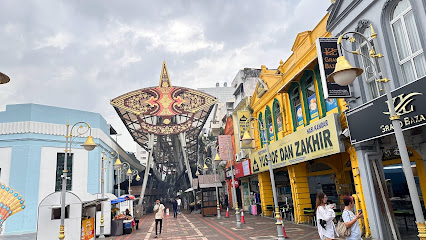
Menara Kuala Lumpur
Experience breathtaking views and Malaysian culture at Menara Kuala Lumpur, a must-visit landmark and observation deck in the heart of the city.

Aquaria KLCC
Explore the mesmerizing underwater world at Aquaria KLCC, a captivating aquarium in the heart of Kuala Lumpur showcasing diverse marine life and conservation education.

National Mosque of Malaysia
Discover the serene beauty and cultural significance of the National Mosque of Malaysia, a must-visit landmark in Kuala Lumpur.
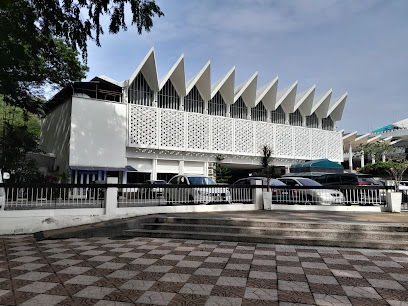
Thean Hou Temple
Experience the serene beauty and cultural richness of Thean Hou Temple, a stunning Buddhist sanctuary in Kuala Lumpur, Malaysia.

The National Museum of Malaysia
Unravel Malaysia's history and culture at the National Museum, where every exhibit tells a story of the nation's diverse heritage.

Little India Brickfields
Discover the vibrant colors, enticing aromas, and rich culture of Little India Brickfields, a must-visit destination in Kuala Lumpur.
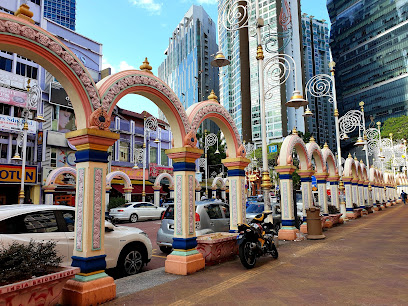
Sultan Abdul Samad Jamek Mosque
Explore the stunning architecture and rich heritage of Sultan Abdul Samad Jamek Mosque, a must-visit landmark in Kuala Lumpur for cultural enthusiasts and travelers alike.
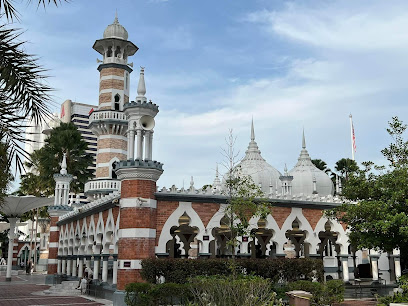
ASEAN Sculpture Garden
Explore the ASEAN Sculpture Garden, a vibrant fusion of art and nature in Kuala Lumpur's Perdana Botanical Garden, celebrating Southeast Asia's cultural richness.

Sky Deck KL Tower
Experience the breathtaking panoramic views from the Sky Deck of KL Tower, an iconic observation point in the heart of Kuala Lumpur.

Tugu Negara
Explore the majestic Tugu Negara, Kuala Lumpur's iconic war memorial, honoring Malaysia's heroes amidst lush gardens and rich history.

Unmissable attractions to see
Resorts World Genting
Discover the ultimate blend of adventure and luxury at Genting Highlands, Malaysia's premier resort destination nestled in the lush Titiwangsa Mountains.

KLCC Park
Discover KLCC Park: A lush urban retreat in Kuala Lumpur featuring breathtaking views of the Petronas Twin Towers and vibrant landscapes.

Independence Square
Experience the rich history and vibrant culture of Malaysia at Independence Square, a key landmark in Kuala Lumpur's city center.

Menara Kuala Lumpur
Experience the breathtaking views from the iconic Menara Kuala Lumpur, a must-visit landmark in the heart of Malaysia's capital.

Petaling Street Market
Explore Petaling Street Market, a vibrant hub of culture and cuisine in Kuala Lumpur's Chinatown, perfect for food lovers and souvenir hunters.

National Mosque of Malaysia
Explore the National Mosque of Malaysia, a stunning symbol of Islamic architecture and cultural heritage in the heart of Kuala Lumpur.
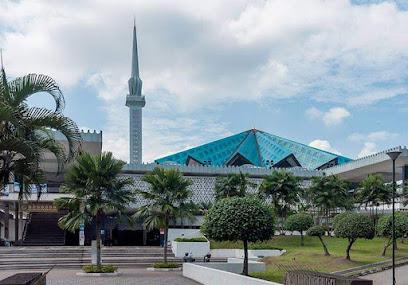
Sunway Lagoon
Discover Sunway Lagoon, Malaysia's premier theme park, offering thrilling rides, water fun, and wildlife encounters for an unforgettable family adventure.

Perdana Botanical Garden
Explore the lush beauty and tranquility of Perdana Botanical Garden, a serene oasis in the heart of Kuala Lumpur, perfect for nature lovers and families.

Putra Mosque
Discover the breathtaking beauty of Putra Mosque, a stunning blend of Islamic architecture and tranquil surroundings in the heart of Putrajaya.

Genting Highlands Premium Outlets Cable Car
Soar above lush landscapes with the Genting Highlands Premium Outlets Cable Car, a scenic ride showcasing stunning views of the Pahang mountains.

National Zoo of Malaysia
Discover a world of wildlife at the National Zoo of Malaysia, where education, conservation, and fun come together in a lush setting.

KL Bird Park
Experience the enchanting world of birds at KL Bird Park, a lush wildlife sanctuary in Kuala Lumpur's Perdana Botanical Gardens.

Colmar Tropicale, Berjaya Hills
Experience the charm of a French village amidst Malaysian natural beauty at Colmar Tropicale, a unique resort hotel in Bukit Tinggi.

Gamers Hideout @Melawati Mall
Discover the ultimate gaming paradise at Gamers Hideout in Melawati Mall, Kuala Lumpur, featuring a vast selection of games, consoles, and exciting events.

Thean Hou Temple
Discover the stunning beauty and cultural significance of Thean Hou Temple, a serene Buddhist temple in Kuala Lumpur, Malaysia.

Essential places to dine
Antipodean Cafe @ Bangsar
Experience top-notch specialty coffee and delectable dishes at Antipodean Cafe in Bangsar – where every sip is a delight.
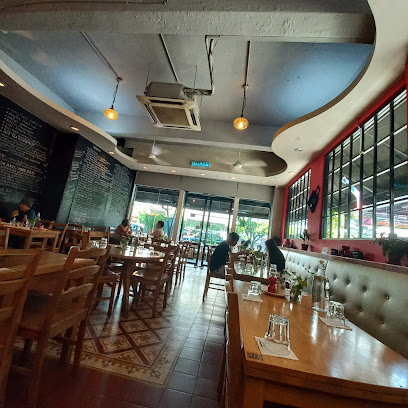
ZENZERO Restaurant & Wine Bar
Experience authentic Italian cuisine at ZENZERO Restaurant & Wine Bar in Kuala Lumpur, where every dish tells a story of flavor and tradition.
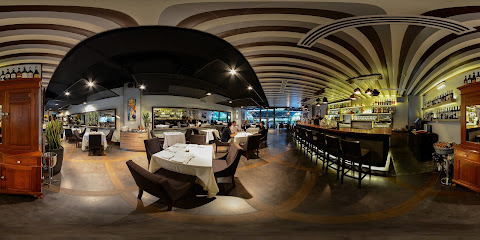
Marini’s on 57
Experience exquisite Italian cuisine with breathtaking views at Marini’s on 57 in Kuala Lumpur's iconic skyline.

Bijan Bar & Restaurant
Savor the essence of Malaysian cuisine at Bijan Bar & Restaurant - where tradition meets modernity in every dish.

Vin's Restaurant
Experience authentic Italian flavors at Vin's Restaurant in Taman Tun Dr Ismail - where every dish tells a story.

THIRTY8 Restaurant, Bar & Lounge
Discover fine dining with stunning city views at THIRTY8 Restaurant in Kuala Lumpur—where culinary excellence meets breathtaking scenery.

Fuego at Troika Sky Dining
Savor authentic South American cuisine amidst breathtaking views at Kuala Lumpur's premier dining destination.

Marble 8 Steak House & Fine Dining Restaurant in KL
Discover Marble 8 Steak House: A culinary gem offering world-class steaks and breathtaking views in Kuala Lumpur's skyline.

1919 Restaurant KL
Savor exquisite Nyonya dishes at 1919 Restaurant KL in Kampung Baru—where Malaysian flavors come alive in every bite.

Bunglow37
Discover the unique charm of Bunglow37 in Bangsar – where Western cuisine meets vibrant nightlife in Kuala Lumpur.

Blackbyrd KL
Experience contemporary dining at Blackbyrd KL in Kuala Lumpur—where Malaysian flavors meet international culinary artistry.

akâr dining
Discover the art of fine dining at akâr dining in Taman Tun Dr Ismail – where exquisite flavors meet elegant ambiance.

El Cerdo
Experience authentic Spanish cuisine at El Cerdo in Kuala Lumpur's Bukit Bintang - where every dish is a celebration of flavor.

Skillet KL
Experience exquisite modern European cuisine with Asian influences at Skillet KL in Kuala Lumpur's vibrant Menara Hap Seng.

Willow Kuala Lumpur
Discover elevated dining at Willow Kuala Lumpur - where fine cuisine meets stunning skyline views in an elegant setting.

Markets, malls and hidden boutiques
Central Market
Explore Kuala Lumpur's Central Market: A Cultural Shopping Haven with Unique Arts, Crafts, and Local Delicacies.
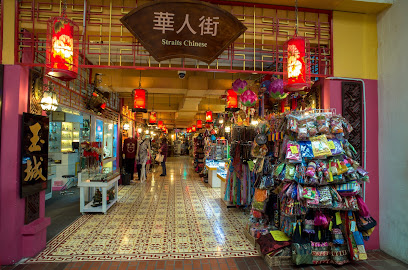
Plaza Low Yat
Experience the ultimate shopping adventure at Plaza Low Yat, Kuala Lumpur's top destination for electronics, fashion, and delightful cuisine.

Kedai KL
Explore Kedai KL, the vibrant outlet mall in Kuala Lumpur, where shopping meets Malaysian culture in a uniquely enticing way.

Batik Boutique - The Row
Explore the vibrant heritage of Malaysia at Batik Boutique - The Row, featuring exquisite batik clothing, accessories, and unique souvenirs.

Shades Kuala Lumpur
Explore Shades Kuala Lumpur, a vibrant gift shop featuring unique artistic handicrafts and interior decor that showcase Malaysian culture.

The APOM Store @ Central Market
Explore The APOM Store at Central Market for unique Malaysian gifts and souvenirs that reflect the country's rich heritage and creativity.

Batik Boutique @ 1 Mont Kiara
Explore the vibrant world of Malaysian craftsmanship at Batik Boutique in Mont Kiara, where unique gifts and fashion accessories await.

Hiro Comic World & Wholesale of Malaysia Souvenirs
Discover the heart of Malaysia through unique souvenirs at Hiro Comic World, a must-visit destination in Kuala Lumpur for every traveler.

The Paper Boutique
Explore The Paper Boutique in Kuala Lumpur for unique gifts, artistic handicrafts, and delightful souvenirs that celebrate Malaysian culture.
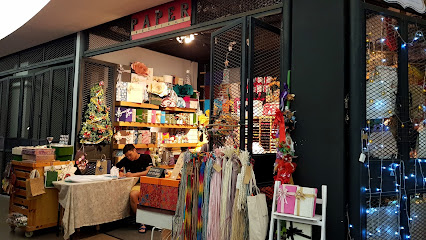
The Factory Store
Explore The Factory Store in Kuala Lumpur for a unique shopping experience filled with trendy fashion and local style.
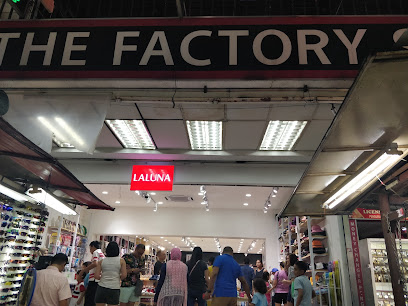
M Store (Pavilion KL)
Discover the latest designer fashion at M Store in Pavilion KL, a chic boutique catering to style enthusiasts in the heart of Kuala Lumpur.

Koleksi Malaya
Explore the rich heritage of Malaysia through exquisite antiques at Koleksi Malaya, a treasure trove for history and culture enthusiasts.

The Apom Store @ Bangsar Village
Explore the vibrant charm of The Apom Store in Bangsar Village, where unique Malaysian gifts and souvenirs await your discovery.

Kl Grand Bazaar
Explore KL Grand Bazaar: A vibrant marketplace in Kuala Lumpur filled with unique gifts, clothing, and handicrafts reflecting rich Malaysian culture.

the artisan haus @ bv2
Discover unique homewares and local craftsmanship at The Artisan Haus in vibrant Bangsar, Kuala Lumpur.
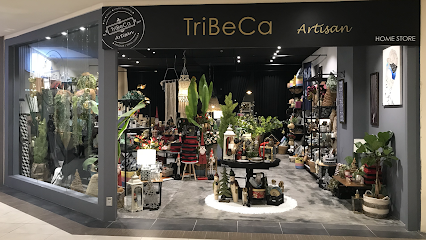
Essential bars & hidden hideouts
Havana Bar & Grill
Experience the lively fusion of grilled flavors and vibrant nightlife at Havana Bar & Grill in Kuala Lumpur's Bukit Bintang.

Canopy Lounge Rooftop Bar KL
Discover the breathtaking views and exquisite cocktails at Canopy Lounge Rooftop Bar in Kuala Lumpur, the perfect spot for unforgettable evenings.

SkyBar
SkyBar in Kuala Lumpur offers stunning skyline views, exquisite cocktails, and a vibrant atmosphere for an unforgettable night out.

Suzie Wong - Dinner and Show
Experience the captivating fusion of live performances, exquisite cuisine, and signature cocktails at Suzie Wong in Kuala Lumpur.

The Rabbit Hole
Discover the charm of The Rabbit Hole, a unique bar and café in Bukit Bintang, Kuala Lumpur, featuring a stunning pool and a vibrant atmosphere.

DEEPBLUE
Discover the breathtaking views and exquisite flavors at DEEPBLUE, a premier bar and restaurant in Kuala Lumpur's skyline.

PS150
Discover PS150: Kuala Lumpur's premier cocktail bar blending vintage charm with modern flair in the heart of the city.

The Iron Fairies KL
Experience the magic of The Iron Fairies KL, a whimsical gastropub in the heart of Kuala Lumpur offering delightful cuisine and enchanting nightlife.

Pisco Bar
Discover the vibrant Pisco Bar in Bukit Bintang, Kuala Lumpur, serving exquisite Peruvian cuisine and lively cocktails for an unforgettable night out.

Mantra Rooftop Bar and Lounge
Experience Kuala Lumpur's nightlife from new heights at Mantra Rooftop Bar and Lounge, where stunning views and exquisite cocktails await.

The Dark Horse - Bar & Grill
Discover the perfect blend of delicious grilled cuisine and a vibrant sports bar atmosphere at The Dark Horse in Kuala Lumpur.
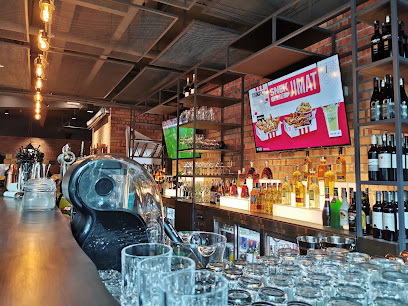
The Whisky Bar KL
Explore an extensive collection of whiskies and wines at The Whisky Bar KL, a sophisticated bar in the heart of Kuala Lumpur's Bukit Bintang.

Pahit
Discover Pahit, a vibrant cocktail bar in Bukit Bintang, Kuala Lumpur, where innovative drinks and a cozy atmosphere await you.
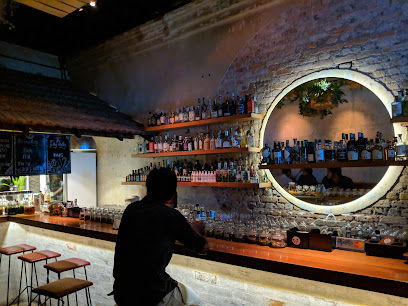
Coley
Discover an unforgettable bar experience at Coley in Bangsar, Kuala Lumpur, where innovative cocktails and delightful cuisine come together.

JungleBird
Discover JungleBird, a top-rated cocktail bar in Kuala Lumpur offering unique drinks and a vibrant atmosphere in the heart of Bukit Damansara.

Local Phrases
-
- HelloSelamat pagi
[suh-lah-mat pah-gee] - GoodbyeSelamat tinggal
[suh-lah-mat ting-gal] - YesYa
[yah] - NoTidak
[tee-dahk] - Please/You're welcomeSila
[see-lah] - Thank youTerima kasih
[teh-ree-mah kah-seeh] - Excuse me/SorryMaaf
[mah-ahf] - How are you?Apa khabar?
[ah-pah kah-bar] - Fine. And you?Baik. Dan awak?
[bah-ee. dahn ah-wahk] - Do you speak English?Boleh cakap Bahasa Inggeris?
[boh-leh chah-kahp bah-hah-sah eeng-guh-rees] - I don't understandSaya tak faham
[sah-yah tahk fah-hahm]
- HelloSelamat pagi
-
- I'd like to see the menu, pleaseBoleh saya lihat menu?
[boh-leh sah-yah lee-haht meh-noo?] - I don't eat meatSaya tak makan daging
[sah-yah tahk mah-kahn dah-yee-ng] - Cheers!Yam seng!
[yam seng] - I would like to pay, pleaseBoleh saya bayar?
[boh-leh sah-yah bah-yahr]
- I'd like to see the menu, pleaseBoleh saya lihat menu?
-
- Help!Tolong!
[toh-lohng] - Go away!Pergi jauh-jauh!
[pehr-gee jah-oo jah-oo] - Call the Police!Panggil polis!
[pahng-geel poh-liss] - Call a doctor!Panggil doktor!
[pahng-geel dohk-tor] - I'm lostSaya sesat
[sah-yah suh-saht] - I'm illSaya sakit
[sah-yah sah-keet]
- Help!Tolong!
-
- I'd like to buy...Saya nak beli...
[sah-yah nahk beh-lee] - I'm just lookingSaya cuma tengok-tengok
[sah-yah choo-mah tehn-gohk tehn-gohk] - How much is it?Berapa harganya?
[beh-rah-pah hahr-gahn-yah] - That's too expensiveItu terlalu mahal
[ee-too teh-rah-lah moo-hahl] - Can you lower the price?Boleh kurangkan harga?
[boh-leh koor-ahn-gahn hahr-gah]
- I'd like to buy...Saya nak beli...
-
- What time is it?Pukul berapa sekarang?
[poo-kool beh-rah-pah suh-kah-rahn] - It's one o'clockPukul satu
[poo-kool sah-too] - Half past (10)Pukul setengah (sepuluh)
[poo-kool suh-tuh-ngah (suh-poo-looh)] - MorningPagi
[pah-gee] - AfternoonPetang
[peh-tahng] - EveningMalam
[mah-lahm] - YesterdaySemalam
[suh-mah-lahm] - TodayHari ini
[hah-ree ee-nee] - TomorrowEsok
[eh-sohk] - 1Satu
[sah-too] - 2Dua
[doo-ah] - 3Tiga
[tee-gah] - 4Empat
[em-paht] - 5Lima
[lee-mah] - 6Enam
[eh-nahm] - 7Tujuh
[too-joo] - 8Lapan
[lah-pahn] - 9Sembilan
[suhm-bee-lahn] - 10Sepuluh
[suh-poo-looh]
- What time is it?Pukul berapa sekarang?
-
- Where's a/the...?Di mana...
[dee mah-nah] - What's the address?Alamatnya di mana?
[ah-lah-maht-nyah dee mah-nah] - Can you show me (on the map)?Boleh tunjukkan pada saya?
[boh-leh toon-jook-kahn pah-dah sah-yah] - When's the next (bus)?Bila bas seterusnya?
[bee-lah bahs suh-teh-roos-nyah] - A ticket (to ....)Satu tiket (ke ....)
[sah-too tee-keh (keh ....)]
- Where's a/the...?Di mana...
History of Kuala Lumpur
-
Kuala Lumpur, often referred to as KL, was founded in 1857 by Chinese tin miners. The name 'Kuala Lumpur' translates to 'muddy confluence,' referring to its location at the confluence of the Klang and Gombak rivers. The miners were drawn to the area due to the rich tin deposits, which played a crucial role in the town's early development.
-
In 1880, Kuala Lumpur was declared the capital of the Selangor state by the British colonial administration. The town quickly grew as the administrative and commercial center, with significant infrastructure developments such as the construction of government buildings, a railway system, and the first modern brick-based structures to replace wooden and thatched buildings.
-
Yap Ah Loy, a Chinese Kapitan and leader, is credited with shaping early Kuala Lumpur through his efforts to develop the town's infrastructure and economy. He established a police force, built roads, and ensured the supply of essential goods, which helped Kuala Lumpur recover from the devastating fire and flood in the late 19th century.
-
During World War II, Kuala Lumpur fell to the Japanese on January 11, 1942. The Japanese occupation lasted until the British reoccupied the city in 1945. This period had a significant impact on the city's social and economic conditions, as the Japanese administration imposed harsh rules and exploited local resources.
-
After World War II, Kuala Lumpur experienced rapid growth and modernization. The city saw significant investments in infrastructure, education, and healthcare. The establishment of the University of Malaya in 1949 marked a milestone in the city's educational development.
-
Kuala Lumpur played a pivotal role in the fight for Malaysian independence. On August 31, 1957, the Federation of Malaya gained independence from British rule, and Kuala Lumpur was declared the national capital. The proclamation of independence took place at Stadium Merdeka, a historic event that marked the birth of a new nation.
-
The late 20th century saw Kuala Lumpur transform into a major metropolitan city. Economic policies such as the New Economic Policy (NEP) spurred industrialization and urbanization. The cityscape changed dramatically with the construction of high-rise buildings, shopping complexes, and modern infrastructure.
-
Kuala Lumpur is known for its cultural diversity, with a population comprising Malays, Chinese, Indians, and various indigenous groups. This multiculturalism is reflected in the city's festivals, cuisine, and architecture. Iconic landmarks such as the Sultan Abdul Samad Building, the Sri Mahamariamman Temple, and the Petronas Twin Towers symbolize the city's rich cultural tapestry.
-
In recent decades, Kuala Lumpur has continued to evolve as a global city. The development of the KL Sentral transportation hub, the expansion of the city’s public transit system, and the establishment of world-class entertainment and business districts have solidified its status as a leading city in Southeast Asia. The city also hosts numerous international events, further enhancing its global reputation.
Kuala Lumpur Essentials
-
Kuala Lumpur is served by Kuala Lumpur International Airport (KLIA), located about 45 kilometers south of the city. KLIA is a major hub for international flights and is well-connected to cities around the world. You can reach the city from the airport by taking the KLIA Express train, which takes around 30 minutes to KL Sentral Station. Alternatively, taxis, ride-sharing services, and buses are available.
-
Kuala Lumpur has an extensive public transportation network. The RapidKL system includes LRT, MRT, and monorail trains, which connect various parts of the city. Buses are also widely available. Taxis and ride-sharing services like Grab are convenient options for getting around. For short distances, you can also consider renting a bike or using electric scooters available in certain areas.
-
The official currency in Malaysia is the Malaysian Ringgit (MYR). Credit cards are widely accepted in hotels, restaurants, and shops, but it's advisable to carry some cash for small purchases or in places where cards are not accepted. ATMs are readily available throughout the city. Currency exchange services can be found in shopping malls and at the airport.
-
Kuala Lumpur is generally safe for tourists, but like any major city, it's important to stay vigilant. Avoid walking alone at night in poorly lit or unfamiliar areas. Be cautious of pickpockets, especially in crowded places like markets or public transport. Notable areas with higher crime rates include Chow Kit and certain parts of Bukit Bintang. Always keep an eye on your belongings.
-
In case of emergency, dial 999 for police, fire, or medical assistance. Major hospitals in Kuala Lumpur include Hospital Kuala Lumpur and Prince Court Medical Centre. Make sure to have travel insurance that covers medical emergencies. Pharmacies are widely available for minor health issues. It's advisable to keep a list of emergency contacts and the address of your country's embassy or consulate.
-
Fashion: Do dress modestly, especially when visiting religious sites. Avoid revealing clothing. Religion: Do respect local customs and traditions. Remove your shoes before entering mosques and temples, and dress modestly. Public Transport: Do give up your seat to elderly passengers and avoid eating or drinking on public transport. Greetings: Do greet people with a polite 'Hello' or 'Salam'. A slight bow or nod is also acceptable. Eating & Drinking: Do try local delicacies and accept food offerings graciously. Don't point your feet at people or religious objects, as it is considered disrespectful.
-
To experience Kuala Lumpur like a local, visit the night markets (pasar malam) for a taste of local street food and culture. Explore neighborhoods like Bangsar and Taman Tun Dr Ismail for trendy cafes and local boutiques. Don't miss the chance to visit the Central Market for local arts and crafts. For a unique experience, take a walk in the KL Forest Eco Park, a tropical rainforest reserve in the heart of the city.
Trending Landmark in Kuala Lumpur
Nearby Cities to Kuala Lumpur
-
Things To Do in Malacca
-
Things To Do in Cameron Highlands
-
Things To Do in Ipoh
-
Things To Do in Kuantan
-
Things To Do in Penang
-
Things To Do in Kuala Terengganu
-
Things To Do in George Town
-
Things To Do in Johor Bahru
-
Things To Do in Jurong
-
Things To Do in Sembawang
-
Things To Do in Yishun
-
Things To Do in Singapore
-
Things To Do in Bukit Timah
-
Things To Do in Orchard Road
-
Things To Do in Little India


















